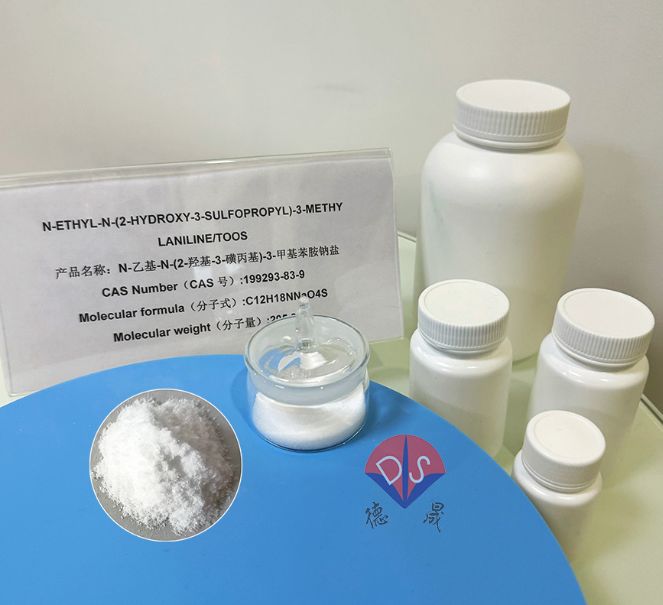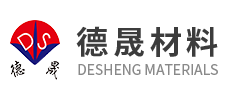What structural adjustments have been made in the domestic IVD market
Release time:
2025-11-25
In the wave of continuous development and transformation in the medical industry, the domestic in vitro diagnostic (IVD) market has undergone profound structural adjustments in recent years. These adjustments are driven by multiple factors such as policy orientation, changes in market demand, and technological innovation, which not only reshape the market competition pattern, but also outline new directions for the future development of the industry.

Chromogenic substrate raw material TOOS
Price and market pattern driven by policies
1. Centralized procurement promotes prices to return to a reasonable range
Since 2021, centralized procurement in the IVD field has been launched, covering multiple sub sectors such as biochemistry, immunology, and molecular biology. Taking biochemical diagnosis as an example, the prices of multiple commonly used testing reagents have significantly decreased after centralized procurement, with an average reduction of over 50% for liver and kidney function testing reagents. According to data from the Medical Insurance Bureau, centralized procurement saved about 7 billion yuan in the field of biochemistry and about 16 billion yuan in the field of immunology. This enables IVD product prices to return to a reasonable level, reducing medical insurance payments and patient burden. From market feedback, price sensitive customers such as grassroots institutions have significantly increased their procurement volume, driving further expansion of the market size.
2. Market concentration has increased, highlighting the advantages of top enterprises
Centralized procurement requires strict requirements for the comprehensive strength of enterprises, and top enterprises with economies of scale, cost control capabilities, and improved sales channels have obvious advantages. In the centralized procurement of immunodiagnostic chemiluminescence reagents, the new industry won the bid with its technological, production capacity, and brand advantages, further increasing its market share. In 2024, the market share of new industry chemiluminescence reagents in China will increase to around 15%, an increase of about 3 percentage points compared to before centralized procurement. Some small and medium-sized enterprises have gradually withdrawn from the market due to cost pressures and technological shortcomings, making it difficult to win bids. The market concentration continues to increase, and the CR5 (the sum of market shares of the top five enterprises in the industry) has increased from 35% in 2020 to around 45% in 2024.
Technological innovation guides the development of segmented tracks
1. The rise of emerging technologies drives the growth of fields such as molecular diagnostics
With the rapid development of molecular diagnostic technology. The application of second-generation sequencing (NGS), digital PCR and other technologies in cancer gene detection, genetic disease diagnosis and other fields is becoming increasingly widespread. In 2024, the domestic cancer gene testing market will reach a size of 12 billion yuan, with an annual growth rate of over 20%, of which NGS technology-based testing projects account for over 60%.
2. Upgrading traditional track technology to enhance product competitiveness
Traditional biochemical and immunological diagnostic tracks are also actively undergoing technological upgrades. In the field of biochemical diagnosis, automation and intelligence have become trends, and multi parameter biochemical analyzers continue to emerge, greatly improving detection speed and accuracy. In terms of immunodiagnosis, chemiluminescence technology continues to be optimized, with improved luminescence efficiency and sensitivity, expanding the scope of detection projects, such as more accurate applications in thyroid function and cancer biomarker detection.
Market layout adjustment triggered by changes in demand
1. Grassroots market is valued, and product adaptability is enhanced
Under the implementation of the graded diagnosis and treatment policy, the volume of diagnosis and treatment in grassroots institutions has been increasing year by year, and the demand for IVD products is growing day by day. But the grassroots market is highly sensitive to product prices and requires easy operation and fast and accurate results. In response to this demand, companies have launched products that are suitable for grassroots use. POCT (Point of Care Testing) products, including rapid blood glucose and lipid testing reagents, are easy to operate and do not require professional technical personnel. Results can be obtained within 5 minutes at an affordable price, and sales in the grassroots market continue to grow. In 2024, its grassroots market sales accounted for 30% of the total sales, an increase of 15% compared to the previous year.
2. The rise of the consumer level diagnostic market and the increase in household testing products
With the improvement of residents' health awareness, the consumer level diagnostic market is quietly emerging, and the demand for household IVD testing products is increasing. The successful promotion of products such as pregnancy testing and antigen self-test has opened up directions for the market.
Supply chain optimization ensures stable development of industries
During the epidemic, the supply chain was disrupted, and IVD enterprises faced problems such as raw material supply shortages and logistics disruptions. In order to reduce supply risks, enterprises have accelerated their localization production layout, increased the cultivation and cooperation of domestic raw material suppliers, and increased the proportion of localized procurement of key raw materials from 30% in 2020 to 60% in 2024, ensuring production stability. At the same time, enterprises can improve their production automation level, reduce labor costs, and enhance production efficiency by building intelligent factories.
Under the influence of various factors such as policies, technology, and demand, the domestic IVD market is undergoing structural adjustments in multiple aspects. These adjustments are an inevitable process for the market to mature, bringing challenges to enterprises while also nurturing new development opportunities.

Biological buffer HEPES
As an upstream IVD reagent raw material supplier, Hubei Xindesheng Company provides key support for downstream customers with products such as biological buffering agents, luminescent reagents, colorimetric reagents, enzyme preparation raw materials, etc. Its biological buffering agents such as Tris, HEPES, etc. can stabilize the pH value of the detection system and ensure a suitable reaction environment; Luminescent reagents and chromogenic reagents assist in the signal output of detection methods such as chemiluminescence and enzyme-linked immunosorbent assay; The raw materials for enzyme preparations provide highly active ingredients for reagent catalyzed reactions. The company ensures the stability of raw material batches through strict quality control, and meets the needs of customers from research and development to mass production with large-scale production capacity, becoming an important guarantee for the upstream of the IVD industry chain. If you have any purchasing needs, please feel free to contact us at any time!
Previous page
Previous page
Contact details
Contact number
Address: C8, Guanggu United Science and Technology City, Ezhou City, Hubei Province
Fax:0711-3704 589
Follow us



